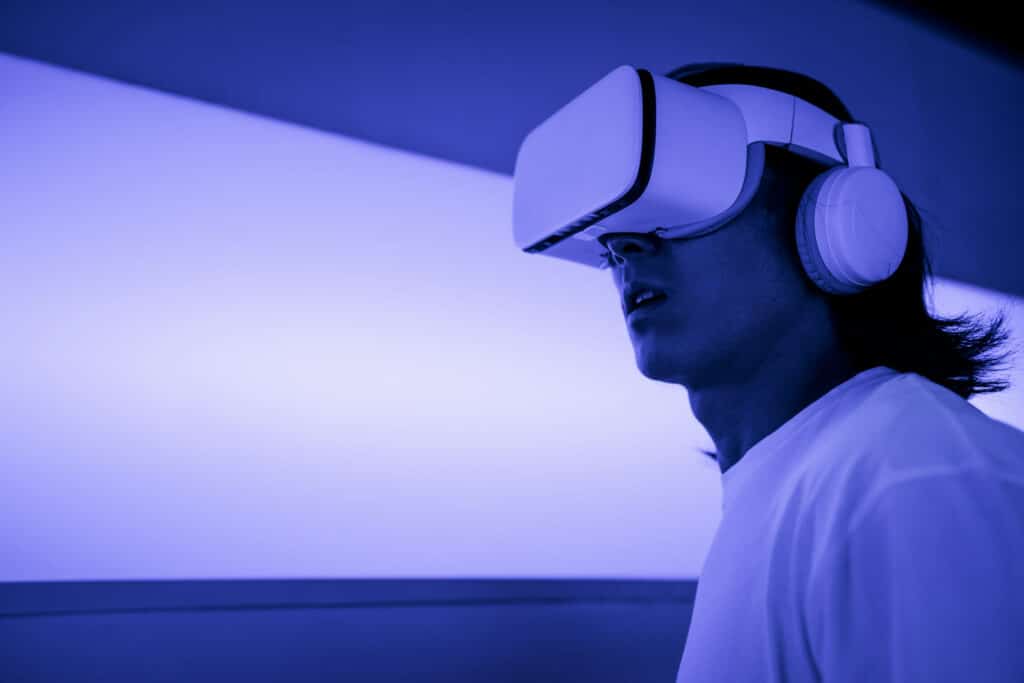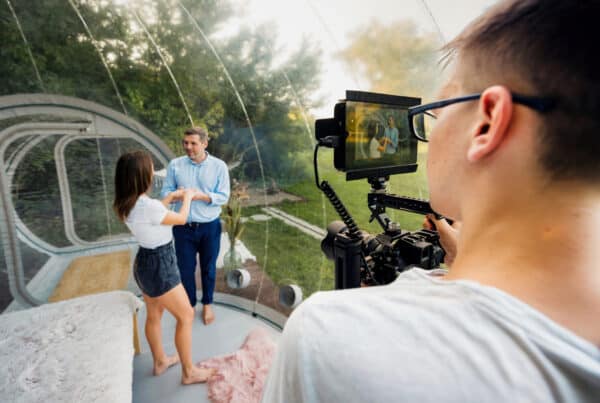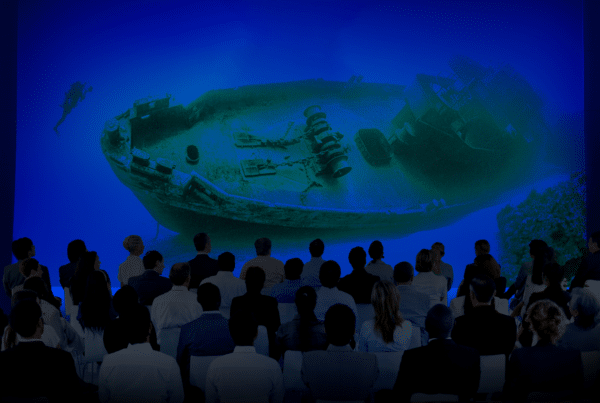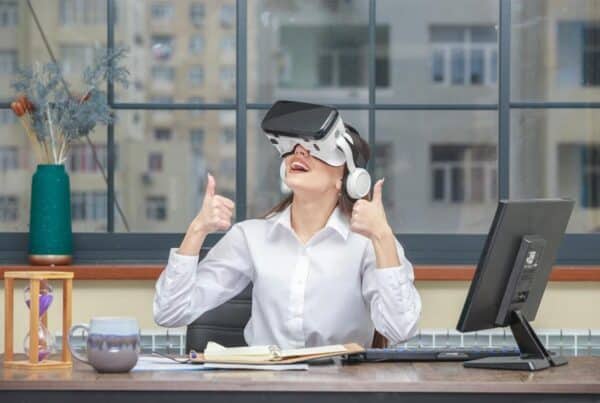
In a world where technology continually pushes the boundaries of our experiences, virtual reality (VR) stands at the forefront, reshaping how we explore and interact with our environment. Gone are the days of static images and conventional video tours; today’s virtual reality headsets offer immersive experiences that transport users into dynamic 360-degree worlds. Whether it’s taking a stroll through a breathtaking museum, touring a stunning property, or wandering through a vibrant cityscape, VR technology brings these experiences to life in ways we could only dream of before. This blog post delves into how VR headsets are revolutionizing 360 virtual tours, enhancing interactivity, realism, and engagement, while opening up new possibilities for education, tourism, and real estate. Join us as we explore this exciting frontier and discover how the future of exploration is unfolding before our very eyes.
Understanding Virtual Reality and 360 Tours
Virtual reality (VR) and 360-degree tours are revolutionizing the way we experience digital environments, offering users an immersive sensation that transcends traditional viewing methods. At its core, virtual reality is a computer-generated simulation that allows users to interact with a three-dimensional space in a way that feels remarkably real. Equipped with VR headsets, users can explore environments as if they were physically present, providing a sense of depth and spatial awareness that flat images or videos simply cannot replicate.
360-degree tours, on the other hand, are a specific application of this technology, allowing viewers to navigate through a panoramic view of a location. Unlike standard videos or photographs, which limit how a viewer can engage with the scene, 360-degree tours invite users to control their perspective, seamlessly looking up, down, and around to fully absorb the surroundings. This interactive experience is enhanced by the addition of sound and, in some cases, even haptic feedback, further immersing participants in the environment.
Combining these two technologies opens up endless possibilities for various industries. Real estate agents can showcase properties to potential buyers without requiring them to step foot inside, while museums can offer virtual visits that let art enthusiasts experience exhibitions from anywhere in the world. Educational institutions leverage VR to transport students to historical sites or distant planets, making learning an engaging and memorable adventure.
Understanding the synergy between virtual reality and 360 tours is crucial to appreciating how they are transforming our interactions with digital content. As this technology continues to evolve, we can expect even more innovative applications, making the virtual world more accessible and engaging than ever before. Whether for entertainment, education, or business, the future of exploration is undoubtedly enhanced by the captivating power of virtual reality.
The Technology Behind VR Headsets
The technology behind virtual reality (VR) headsets is a fascinating amalgamation of advanced engineering, software innovation, and immersive design, all aimed at transporting users into a different realm of experience. At the heart of these devices are high-resolution displays that offer stunning visual fidelity, allowing for an incredibly lifelike simulation of environments. Most modern VR headsets feature dual screens, one for each eye, which creates a stereoscopic effect, enhancing depth perception and making virtual spaces feel real.
Sensors play a crucial role in a VR headset’s functionality. Inside the headset, gyroscopes and accelerometers track head movements, enabling users to look around in a 360-degree space. This motion tracking ensures that the virtual environment adjusts seamlessly to the user’s movements, whether they are tilting their head to gaze at an object or turning around to explore a new part of the scene. Additionally, some headsets incorporate external sensors or cameras that capture the user’s position in real space, further enhancing immersion by allowing for free movement within the virtual tour.
Audio technology is equally important in creating a fully immersive experience. Many VR headsets come equipped with spatial audio systems that simulate sound from various directions, allowing users to hear the subtle rustle of leaves in a virtual forest or the distant chatter of people in a bustling street. This auditory element, combined with high-quality visuals, fully engages the senses, making the experience of exploring virtual tours truly captivating.
Software is the backbone of the VR experience, with advanced graphics engines rendering environments in real time. Whether it’s exploring a historical landmark, walking through a modern art gallery, or touring a real estate property, intricate details and realistic textures are rendered to enhance the user experience. Additionally, VR platforms often allow for interactive elements, letting users engage with objects or navigate through spaces, making each virtual tour unique and personalized.
In summary, the technology behind VR headsets combines cutting-edge display technology, precise motion tracking, immersive audio, and powerful software to create captivating 360 virtual tours. As this technology continues to advance, the potential applications for VR in tourism, education, and real estate are limitless, promising a future where exploring the world—virtually—becomes an everyday experience.
Here are some popular brands that manufacture virtual reality (VR) headsets:
- Oculus (Meta) – Known for the Oculus Quest and Oculus Rift series, Oculus is a leading brand in the VR market.
- HTC Vive – Offers several models, including the HTC Vive, Vive Pro, and Vive Cosmos, focusing on high-quality VR experiences.
- Sony – The PlayStation VR headset is designed for use with PlayStation consoles and has a strong library of gaming content.
- Valve – Known for the Valve Index, which offers high-end VR features and precise motion tracking.
- Samsung – The Samsung Gear VR was a popular mobile VR headset that worked with select Samsung smartphones.
- Pimax – Offers ultra-wide field-of-view headsets, such as the Pimax 5K and 8K series, catering to enthusiasts.
- Microsoft – The HoloLens is more focused on augmented reality (AR), but it incorporates VR elements and is widely used in enterprise applications.
- Lenovo – Known for the Mirage Solo and other VR solutions, often aimed at both consumers and enterprises.
- Google – Previously offered the Daydream View and Cardboard, focusing on mobile VR experiences.
- Apple – While not released yet, Apple has been rumored to be working on a mixed reality headset, creating a lot of buzz in the industry.
These brands vary in terms of target audiences, from gamers to enterprise users, and they offer a range of VR experiences from mobile to high-end PC-based systems.
Enhanced Interactivity: Engaging Users Like Never Before
As technology continues to evolve, so does the potential for virtual reality (VR) to redefine how we experience environments, particularly through 360 virtual tours. One of the most exciting advancements in this realm is the enhanced interactivity offered by modern VR headsets, which are transforming passive viewing into immersive, engaging experiences. Unlike traditional 360 videos that merely allow viewers to look around a space, VR headsets bring users directly into the heart of the action, enabling them to interact with their surroundings in real-time.
With the use of motion tracking and hand controllers, users can now reach out and manipulate objects within the virtual environment. Imagine exploring a virtual museum where you can not only admire the artwork from various angles but also pick up artifacts, read detailed descriptions, or even trigger multimedia presentations that delve deeper into each piece’s history. This level of interactivity fosters a sense of presence and agency, allowing users to tailor their experiences to their individual interests and preferences.
Moreover, enhanced interactivity also extends to social engagements. Virtual reality platforms are increasingly incorporating elements that allow users to invite friends or engage with others in shared virtual spaces. This means that a virtual tour of a stunning destination can become a shared adventure, where friends can explore together, discuss their findings, and create lasting memories, all from the comfort of their own homes.
In addition to leisure activities, industries such as real estate are leveraging these advancements to offer potential buyers a more engaging way to explore properties. Instead of simply viewing static images or 3D floor plans, clients can walk through homes, enter different rooms, and even visualize modifications before making a decision. This not only enhances the user experience but can significantly expedite purchasing processes.
As we continue to embrace the future of technology, the enhanced interactivity of VR headsets stands at the forefront of transforming 360 virtual tours. By offering a more engaging and personalized exploration of both familiar and new environments, these advancements promise to redefine how we connect with the world around us—making each virtual journey not just a viewing, but an adventure filled with discovery.
Applications of VR in Various Industries
Virtual Reality (VR) technology is not just a novelty; it’s rapidly becoming a transformative tool across various industries, reshaping how we experience the world and interact with environments. One of the most exciting applications of VR is in real estate, where virtual tours allow potential buyers to explore properties from the comfort of their homes. This immersive experience enables them to walk through a home, assess room sizes, visualize layouts, and even feel the ambiance—all without stepping foot on the premises.
In the travel and tourism sector, VR is revolutionizing how destinations are marketed. Travelers can embark on virtual tours of exotic locales, explore historical sites, or experience attractions before making a travel decision. This immersive preview not only enhances the booking experience but also helps in planning itineraries tailored to individual preferences.
Education is another area where VR is making significant strides. Imagine students donning VR headsets to step into a virtual laboratory, explore ancient civilizations in 360 degrees, or conduct simulations that would be impossible in a traditional classroom setting. This hands-on learning approach fosters engagement and retention, making education more interactive and enjoyable.
Healthcare is also reaping the benefits of VR technology, particularly in training and rehabilitation. Medical students can practice surgical procedures in a risk-free environment, while patients recovering from injuries can engage in virtual physiotherapy sessions designed to motivate movement and exercise through gamification.
Furthermore, the retail industry is beginning to leverage VR headsets to enhance the shopping experience. Customers can try on virtual clothes, visualize furniture in their homes, or even browse entire stores without leaving their living rooms. This not only bridges the gap between online and in-store shopping but also provides a customized experience that aligns with the evolving needs of consumers.
As we explore the future of VR, it’s clear that its applications span far beyond entertainment. From real estate and travel to education, healthcare, and retail, VR is redefining how we interact with our surroundings, offering immersive experiences that engage the senses and transform traditional practices. As technology continues to advance, we can only anticipate even more innovative uses for VR, making it an essential tool for various industries looking to enhance engagement, efficiency, and user experience.
Step into the future of exploration with virtual reality headsets! Experience 360 virtual tours like never before—fully immersive, interactive, and lifelike. Whether for education, travel, or business, VR transforms the way we see the world. Contact us today to discover how VR can elevate your virtual experiences!




